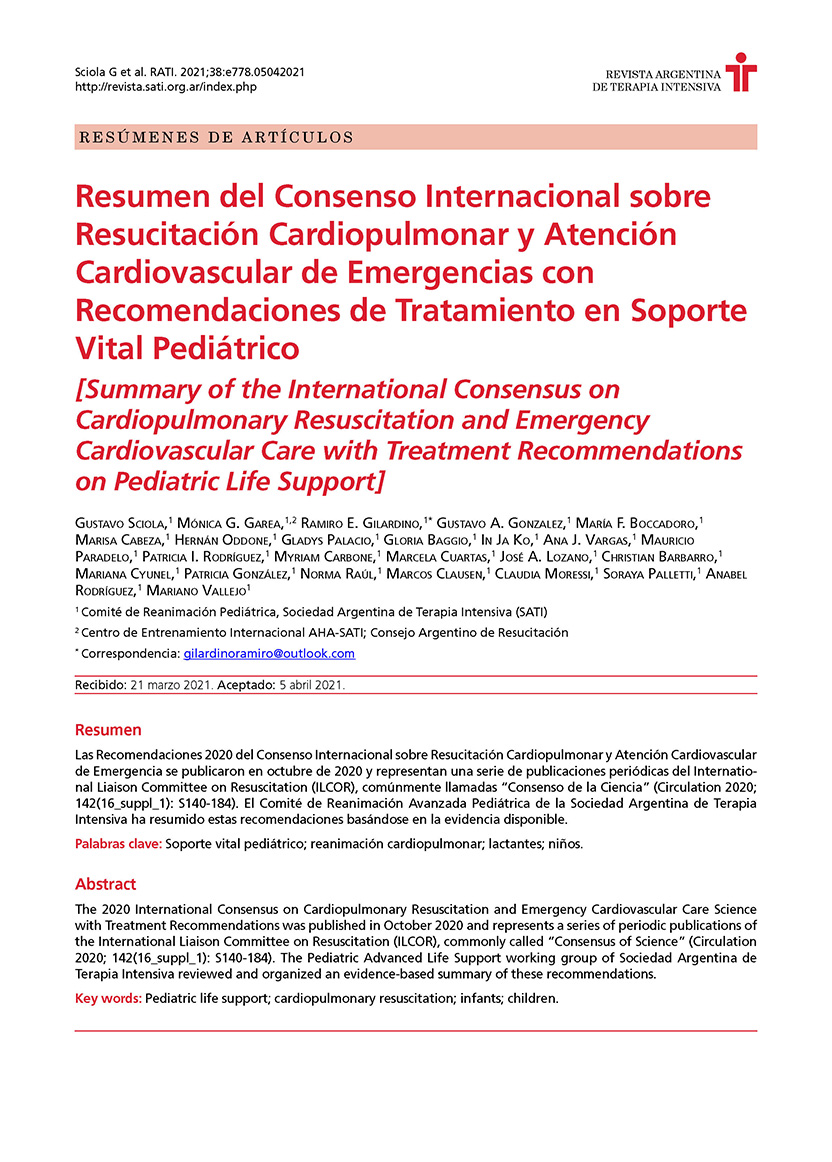Resumen
Las Recomendaciones 2020 del Consenso internacional sobre Resucitación Cardiopulmonar (RCP) y Atención Cardiovascular de Emergencia (ACE) fueron publicadas en octubre de 2020 y representan una serie de publicaciones periódicas del Comité Internacional de enlace en Resucitación o ILCOR (International Liaison Committee on Resuscitation) comúnmente llamadas “Consenso de la Ciencia” (Maconochie IK, 2020 International Consensus on Cardiopulmonary Resuscitation and Emergency Cardiovascular Care Science With Treatment Recommendations. Circulation. 2020 Oct 20;142(16_suppl_1):S140-S184). El Comité de Reanimación Avanzada Pediátrica de SATI ha realizado un resumen de las mismas basado en la evidencia disponible.
La revista no retiene los derechos de reproducción (copyright) por lo que los autores pueden volver a publicar sus trabajos con la sola mención a la fuente original de publicación.

